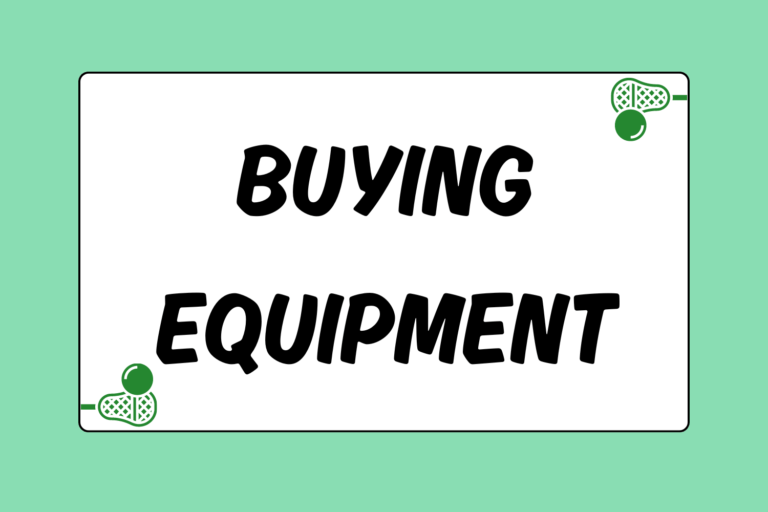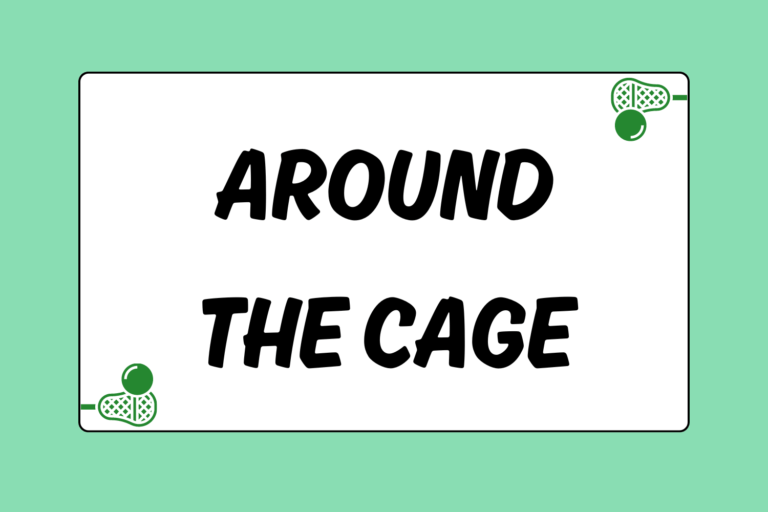In terms of using their sticks, defensemen and long stick midfielders (LSM) have different requirements and needs than short-stick players. They have to be able to deliver checks, but their sticks need to stay intact and avoid bending while enduring constant pressure and brutal pounding.
Since defensemen don’t handle the ball as much as other players, the pocket on the stick is less important than the structural integrity. LSM’s, however, do handle the ball and may want to get a head more suited for an offensive player. There are many different variations, and this guide explores the best way to customize a defensive stick for a defensemen, LSM, and goalie.
Defensemen
The head on a defensive stick should be very stiff and capable of delivering hard blows to the stick and hands of opposing attackmen. The shaft should be strong but light; no one wants to run around the field swinging a tree trunk.
Try using a head that is stiff and wide. Since handling the ball is generally the lowest priority for a defenseman, the width and stiffness are more important than the hold and depth of the pocket. Defensemen need to be able to catch long cross-field passes on clears, as well as scoop up ground balls in heavy traffic. The type of stringing isn’t a concern, as long as you’re comfortable with how it throws. Whether you like a smooth release or a ton of whip, make sure you’re comfortable with the release.
When it comes to the shaft, there are a few characteristics to consider. While it may be nice to have the lightest shaft possible, you still need one that checks hard enough to dislodge the ball from an attackman’s stick. At the same time, an extremely heavy shaft can be a real burden. Try out some of your teammates’ sticks to get a feel for how light you want the shaft/head combo to be before you make your final decision on what to buy.
Hot Tip: Always Have a Backup
Every player needs to have a backup stick ready. You never know when your first stringer is going to break or malfunction, so having a reliable backup is crucial. Make sure that your backup stick throws the same as your primary one. It doesn’t have to be the same model or make, it just needs to throw the same way. A faltering backup stick can be your worst nightmare!
Long Stick Midfield
Long stick midfielders have a different set of skills and responsibilities than a defenseman. LSM’s are counted on to handle the ball and be ground ball machines. Some LSM’s even join the offense when in transition, so they may want to consider getting a head that an offensive player would normally use. You should use a light shaft, since you’ll be doing a lot more running than a close defenseman.
Buy a narrow head so you can maintain a good hold on the ball as you run with it in the open field. Don’t worry about the stiffness of the head, since LSM’s do far less checking than close defensemen.
The stringing should allow you to pass accurately and quickly. You want a quick release as you get rid of the ball on fast breaks and transition plays. Go with two hockey laces and a nylon shooting string above them. The nylon should be strung the tightest, with the lower two laces getting successively looser. Make sure your pocket holds the ball at mid- to low-height, allowing you to dodge, cradle, and take some checks without worrying about the ball falling out of the head.
Long stick midfielders should use the lightest shaft possible. LSM’s don’t normally break their shafts because they chase midfielders around in the open field on defense, rather than guarding attackmen in tight spaces and throwing checks. A C405 or scandium shaft works great for LSM’s, as they tend to be the lightest ones on the market. They are also less expensive than titanium.
Goalie
Goalies don’t have much to consider when customizing a stick. Goalies need a deep pocket and a light shaft, so customization is pretty easy. The main concern is finding a lightweight stick that helps you get to the ball quickly when making saves. Some goalies have specific preferences though, so it’s important that goalies are aware of different options when customizing their sticks.
Goalies only have a few choices when choosing a head. A head with open sidewalls cuts down on the weight of the stick. For the stringing, monster mesh tends to break-in the deepest and gives goalies the best formed pockets. However, hard mesh is also a fine stringing option. Make sure your lowest shooter is strung in a V-shape to help channel the ball to the right spot on your passes. Goalie sticks have such large heads that the ball can easily float around in the pocket, causing the ball to release oddly if it isn’t channeled.
Goalies have a few options when choosing a shaft. Goalies tend to hit the pipes with the bottom of their shaft, so their sticks are often nicked up. Keepers that continually slap their stick against the crossbars should consider getting a titanium shaft. If not, go with the lightest possible shaft.
Lastly, goalies should consider the length of their shaft when customizing their stick. Most goalies go with the standard goalie length, which is in between an attack/midfield shaft and a defensive shaft, but some goalies like to use a short stick. Short sticks are lighter, but they also reduce the distance and velocity of clearing passes. Occasionally, goalies make a lucky save with the bottom end of the shaft, so the chances of making an outrageous save decreases as the shaft gets shorter.
Shut-down Defense
Regardless of what position you play, you need a stick that fits your style of play. Assess your game and consider how you play before you shell out a couple hundred bucks on a new stick simply because it looks cool. A stick that fits your style of play saves you a bunch of trouble and makes you a better player.





